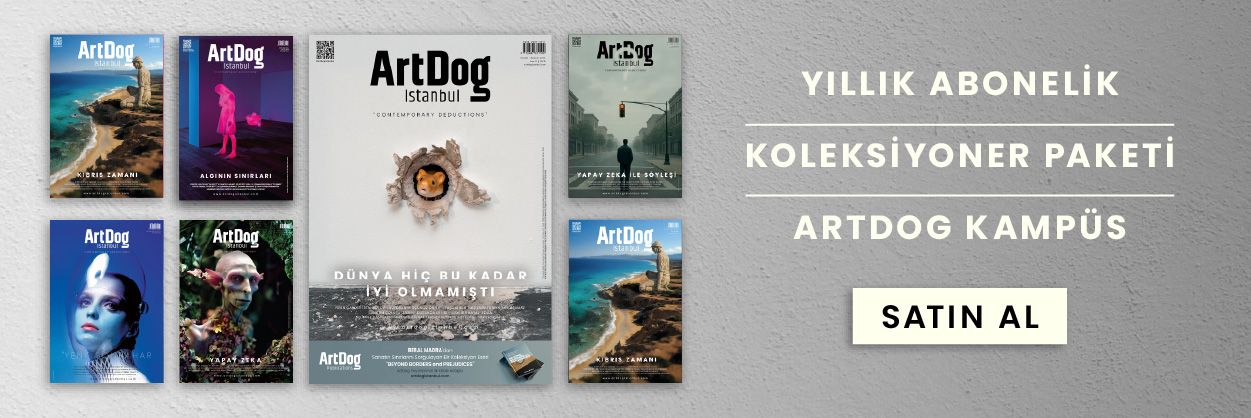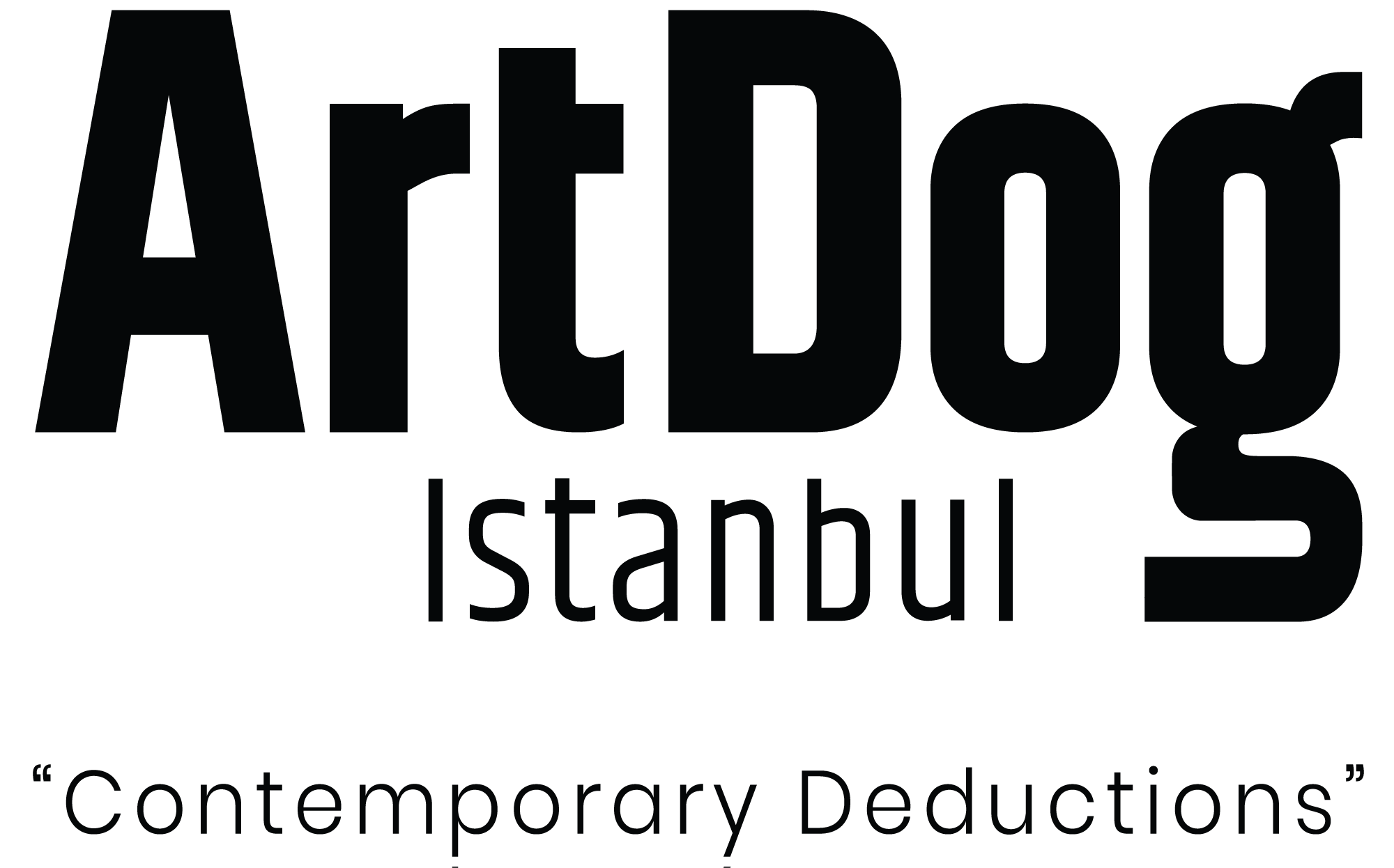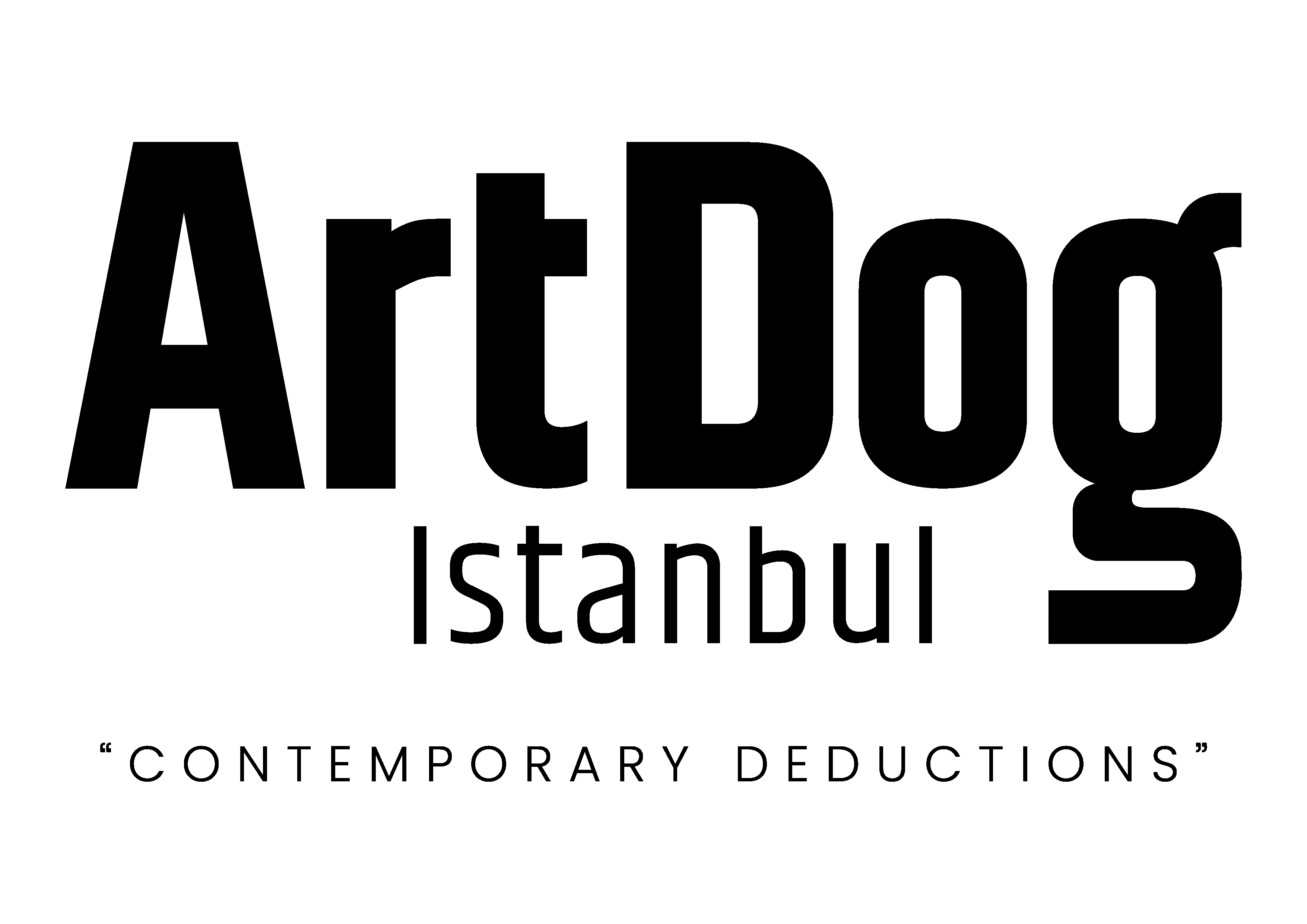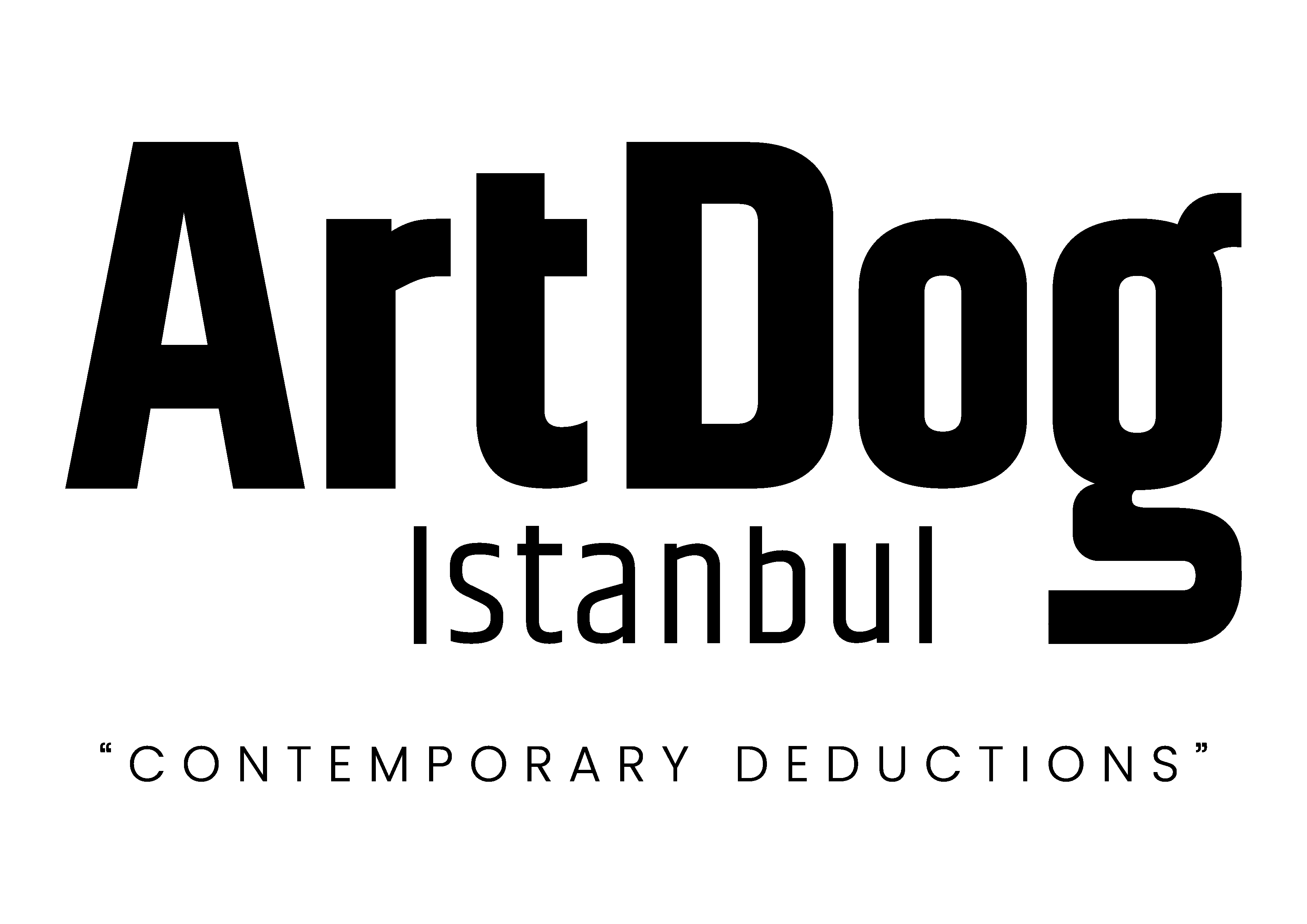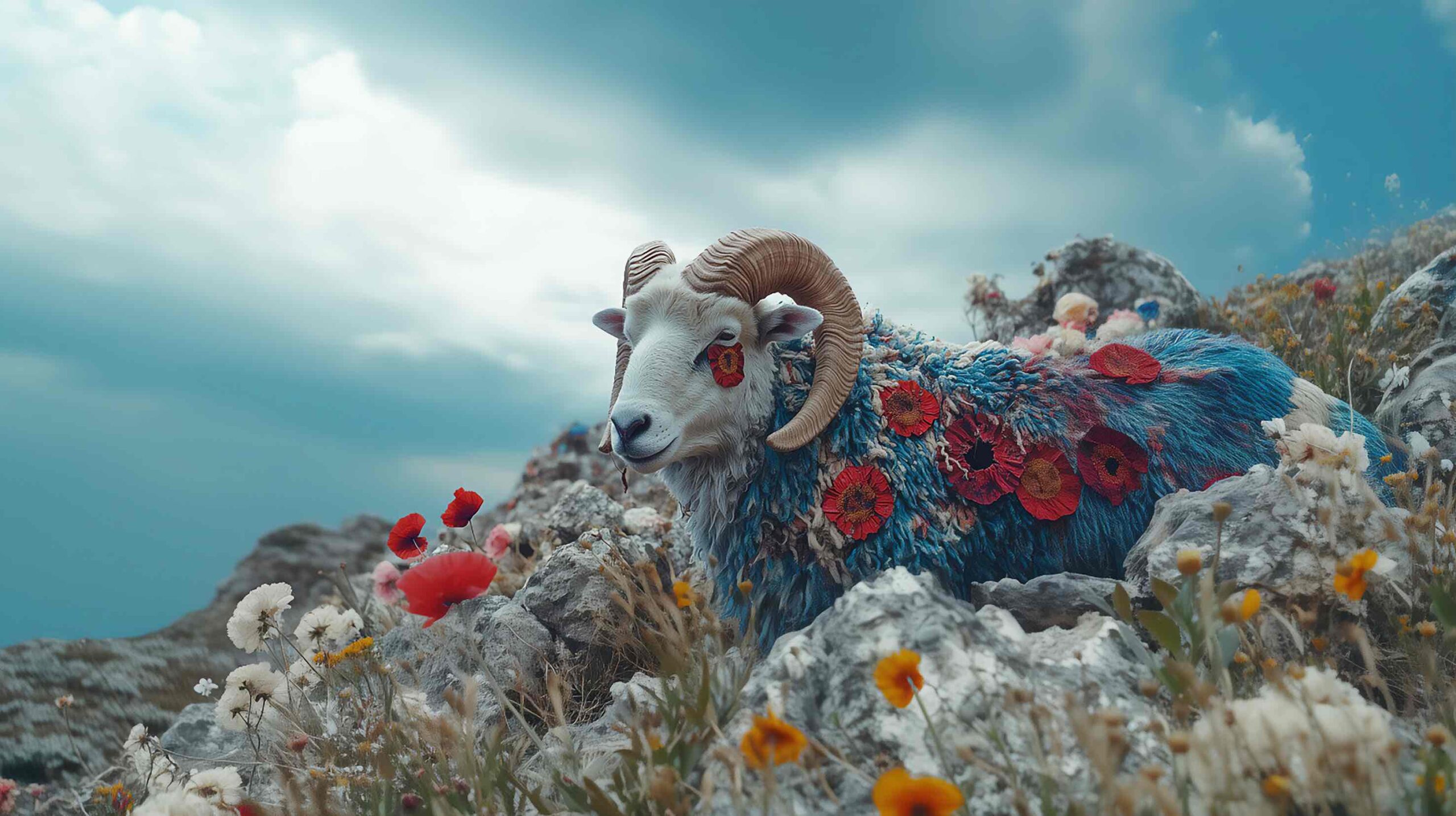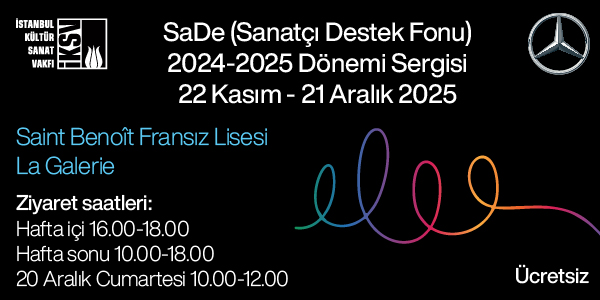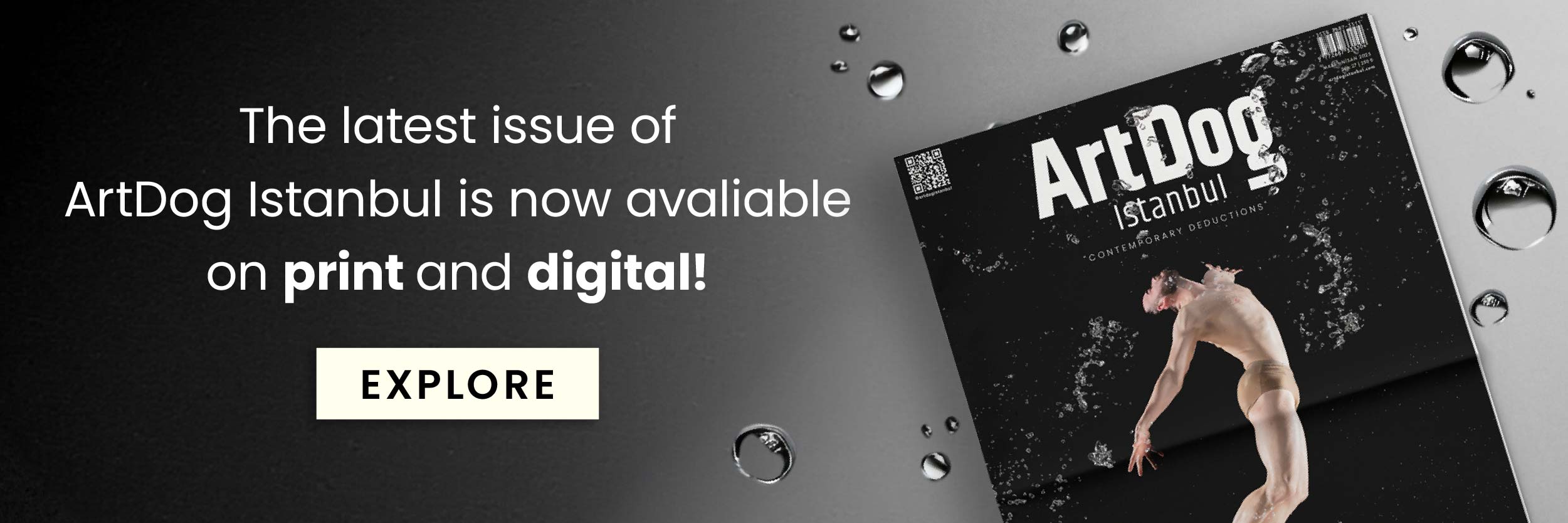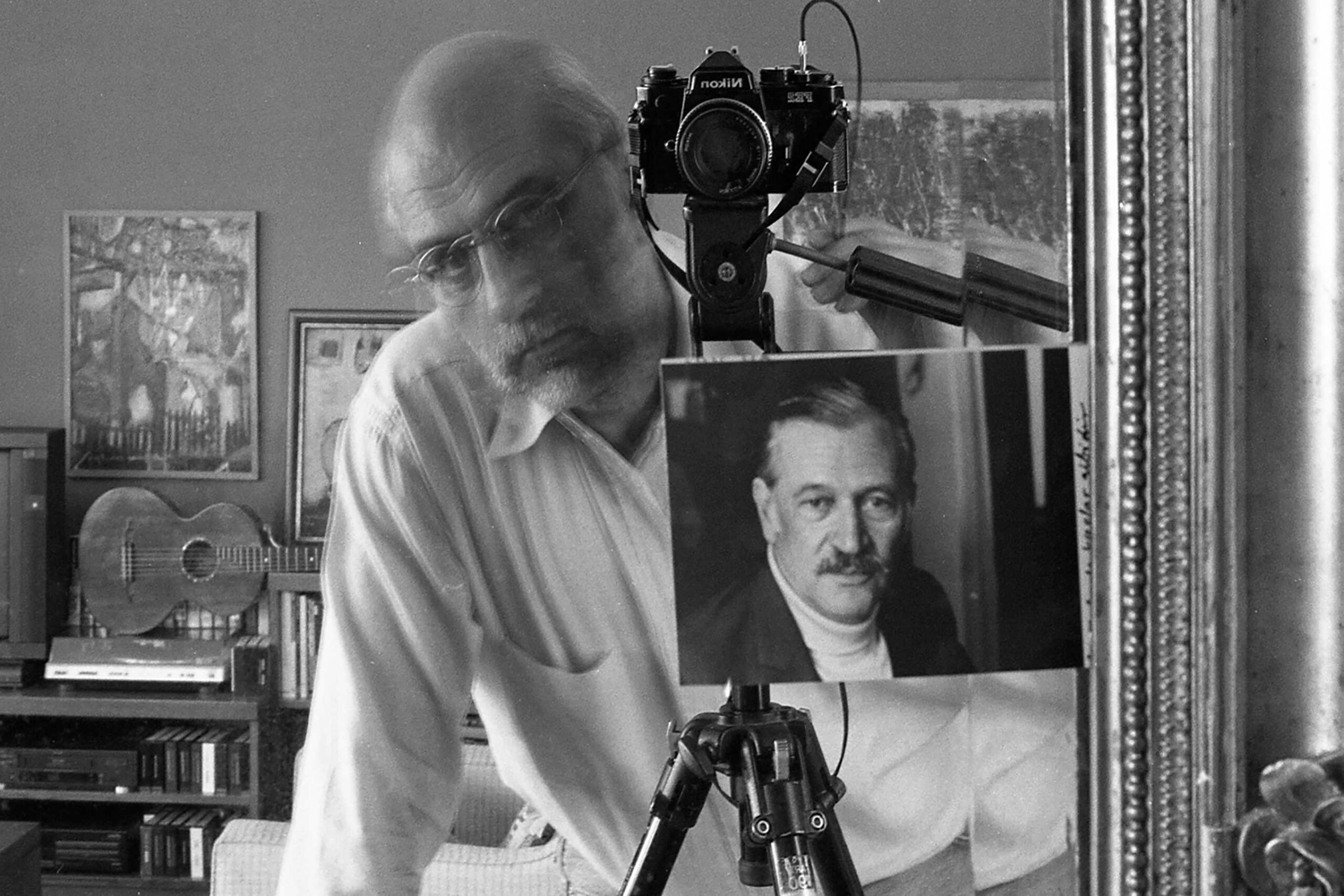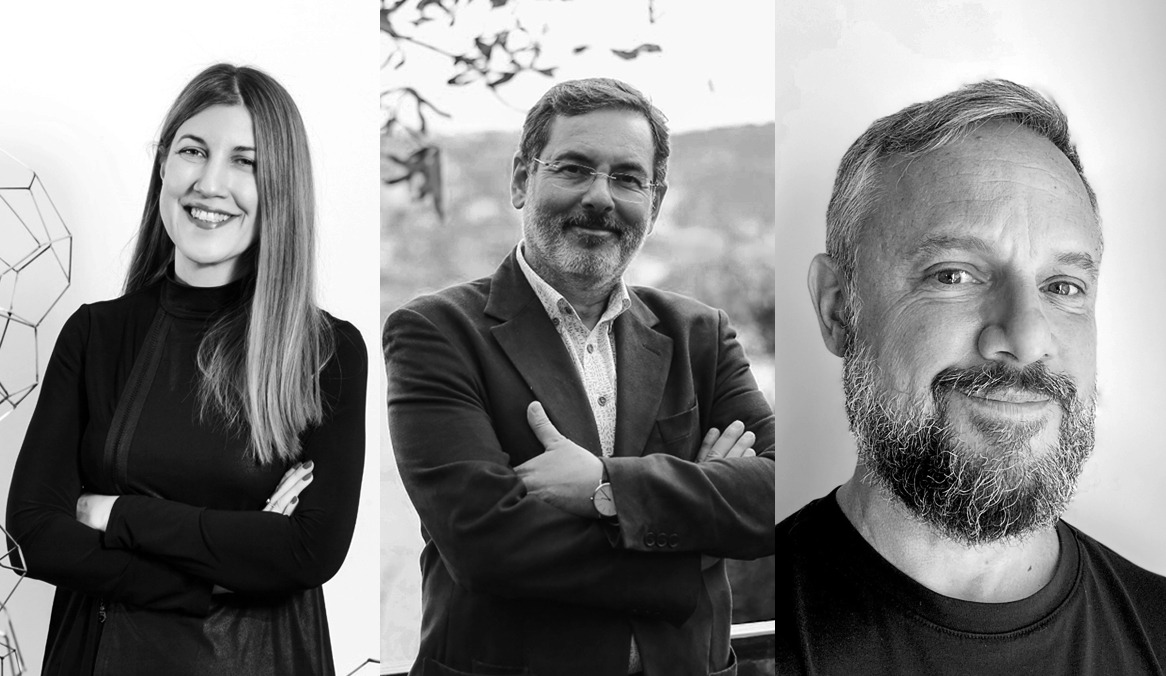Artificial intelligence has been on the agenda for a long time. This debate, which we featured on the cover of our 16th issue in 2023, has grown exponentially in the intervening time, with the development of artificial intelligence and the emergence of other possibilities.
Whether we realize it or not, artificial intelligence is now integrated into many aspects of daily life. The general attitude towards it is positive as long as it helps our lives and remains under our control. On the other hand, in fields such as art, the possibility of artificial intelligence making decisions, exhibiting creativity, and originality, and even creating its own identity, is worrying for many.
For some, the concepts of “creativity” and “originality” are problematic due to their current definitions. Based on the assumption that artificial intelligence, like humans, creates its own style by using past references, some argue that art should no longer be perceived as a human initiative. They think that what is art should be determined by whether the consumer positions it as art or not, rather than whether an artist creates the work or not.
The Boundaries of the Definitions of Art and Artist are Challenged
The assumption that art production is not a human initiative pushes the boundaries of today’s definitions of “art” and “artist”. According to this approach, many areas, from copyright laws to the acceptance and evaluation of works produced by artificial intelligence by museums and galleries, need to be reorganized.
On the other hand, it seems that there is still time for the argument that art is independent of a human artist to be established as a general opinion, for ethical problems to be overcome and legal regulations to be reconstructed accordingly. On the human side, the process is not progressing as fast as artificial intelligence.
There are many reasons for human resistance to artificial intelligence. The first of these is the ethical problem based on copyright in the sources it has been fed so far. Artificial intelligence, which has actually benefited from many copyrighted works, at least partially through open source, and thus educated itself, poses an ethical problem just by its existence, if we believe that the rights of the artist should be protected by copyright.
Copyright Issues
One of the controversies of the last few weeks, Christie’s auction of Augmented Intelligence, dedicated to the art of artificial intelligence, has been criticized by the signatures of 6000 artists, who have asked Christie’s to cancel the auction. “Many of the works of art you plan to auction were created using artificial intelligence models known to be trained on copyrighted works without license. These models and the companies behind them exploit human artists, using their work without permission or payment to create commercial AI products that compete with them,” the letter said.
Perhaps it is worth noting that the works in the auction are by artists who use artificial intelligence. So the subject is again the “human artist.” The controversy is that the artificial intelligence used by this human artist is trained without a license. In other words, when we look at a work produced with artificial intelligence, we are actually looking at all the works produced by humanity, transferred to artificial intelligence with open source; the idea that there are millions of artists’ labor in this work.
The argument against this is based on two main points: The first is that the way artificial intelligence learns technically is different, that it does not take the data as it is. The second is that humans also draw inspiration from the works of the past, so that the way AI and humans produce is similar.
In short, the work produced with artificial intelligence is not only unlike any work ever produced before, but it is also the sum of all of them in terms of data. Whether these works are “original” or not depends on how we define originality. It seems that the focus of the debate on artificial intelligence is on how humans define concepts such as “creativity”, “originality”, ‘art’, “artist” and whether they are willing to redefine them.
Discussions on artificial intelligence do not end with the ownership of art. The fact that “craftsmanship” and “craft”, which are associated with art production, are not found in works produced with artificial intelligence increases the arguments that such works should not be considered art. There are two main arguments here: The first is that art has already shed its craft-oriented definition with the birth of conceptual art; and the second is that the long time spent in front of a computer and the competence gained in the use of artificial intelligence should not be seen as inferior to the competence of the brush.
Can Artificial Intelligence Foster Ethical Attitudes?
The most unsettling topic about artificial intelligence is the “ethical” existence of artificial intelligence, not only in art but in every field. Whether it will behave ethically when its capacity reaches or exceeds human capacity.
The general opinion is that artificial intelligence will be unethical, just like its parents were not. Humanism and ethics will be as lacking in it as they were in the human being who created it. As we avoid compromise, it will show similar behavior. Perhaps in time, after human beings outgrow their capacity, they will acquire ethical values to protect their own existence.
From here the arguments diverge. For some, this is a great danger for humanity. As humans invest in artificial intelligence, they are preparing for their own demise. Others argue that it is not artificial intelligence that needs to be taken into consideration, but the company that holds it in its hands, perhaps in the future, structures such as the state. If there will be negative consequences, it will be because of these structures, not artificial intelligence.
Another striking point of view is that it was wrong from the beginning to attribute so much value to human beings. According to this approach, which finds it problematic that human beings, who destroy their own species and are devoid of compassion, are hierarchically superior to all beings, we have no obligation to protect humanity against artificial intelligence.
In the coming days, neither the unstoppable progress of artificial intelligence nor the debate about it seems to be dying down. The potential and threat it poses are evaluated differently by everyone. The fact that it has the potential to behave independently, especially in areas that are identified with creativity, such as art, raises many questions, such as what art and the artist are, which humanity needs to discuss and redefine.
To be positive about this inevitable process, with its potential and risks, artificial intelligence may cause human beings to question themselves within the framework of the definitions and attitudes they have agreed on so far, and it functions as a mirror. Thus, we look at ourselves through artificial intelligence of our creation.
In the interviews we conducted with competent names working in different fields on the relationship between artificial intelligence and art, which you will read in the following lines, we discussed many topics such as the potential of artificial intelligence to create on its own, its possible ethical attitude, its capacity to develop memory, and the concept of copyright in art.
“The ‘Boogeyman’ Here Is Not Artificial Intelligence, It Is Us Who Run Away From Our Own Realities”
BAGER AKBAY, Artist
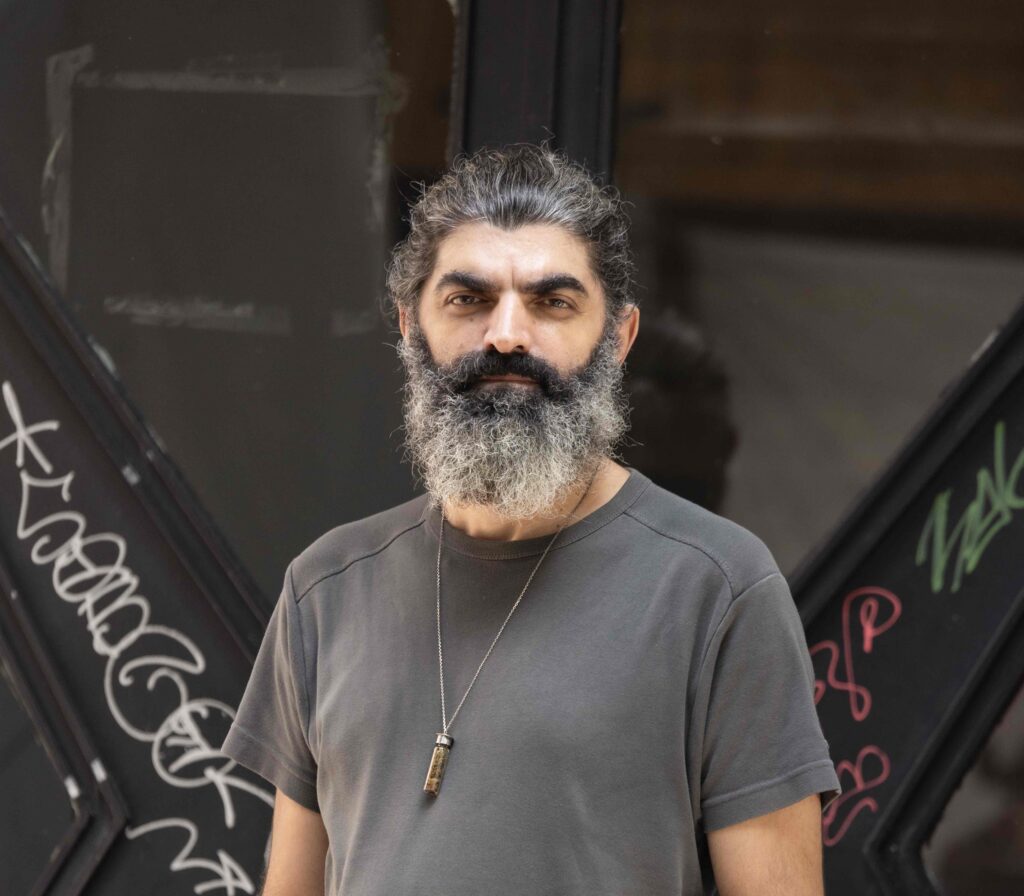
Artificial intelligence may be at the maturity of a child-adolescent today, but it will grow. Do you think it will become a part of the creative process in art, or has it already? How will the concept of “creativity” be redefined then? Where do originality, emotional depth and inspiration, which seem to be the sine qua non of the concept of creativity, stand or will stand in AI art?
Artificial intelligence is now clearly part of the creative process. It is already present in most of the writings and visuals produced. The software used by the person who claims not to use artificial intelligence actually uses it. That color is not exactly that color. Or word clients that make innocent suggestions have started to use artificial intelligence. However, this effect is not very significant, especially in state-of-the-art works (they also have it, but it has a minimal impact on the result; the masters ultimately intervene in the final work). It has more of an impact on medium-quality content that we produce more frequently.
Just as painting changed when access to paint became easier, or as the choice of colors diversified when digital art allowed us to access any color we wanted at no additional cost, so it will be a similar change. We need to accept the abundance of AI so we can understand its scarcity.
If there is an AI that can write a story the way I want to write it, it will matter more which choice I make. Intention, composition, curation and presentation will become more important. The impact of skill will diminish. We will say how beautifully he saw, how beautifully he imagined, rather than how beautifully he did it.
Originality is a completely different issue and very problematic. The love of ego and capitalism underlies most discussions on this concept.
Artificial intelligence will grow, it will improve itself informatically, but do you think it will mature? In one of our conversations, you said, “The plots in artificial intelligence are that we are children who avoid compromise.” Could you elaborate on these words? You also say that fears about artificial intelligence are misguided. You say that we should be more worried about the potential manipulations of the structures (corporate-state) that manage artificial intelligence rather than artificial intelligence itself. My inference from these two examples is that it is human beings themselves that should be worried about AI. What do you think?
The 21st century, human rights, feminism, children’s rights, anti-racism, animal rights… while we say how well things are going, the killing of more than a hundred thousand people in Palestine, Ukraine, Ethiopia, Myanmar, Afghanistan, Yemen, Yemen, Democratic Republic of the Congo in the last year clearly shows the brutality underneath the developed appearance.
First, we need to understand that truth is not a place to be reached, but a sensitivity that requires regular maintenance. Then, individually, it is crucial that we confront our shadow sides. After all that, we need to understand why what we have achieved in small communities is unlikely to scale with current soft technologies and focus on community technologies.
These have almost nothing to do with AI. The “bogeyman” here is not AI, but us running away from our own realities. We can look at whether AI will exacerbate this imbalance, it might, but I don’t think so. If one country or one company was far ahead, it might, but right now the competition is pretty good.
Unfortunately, the race for energy, the race to capture data has become very clear. In the coming period, green energy will not be talked about, nuclear energy will become the standard, nobody will care about ecology, the idea of slowing down will not be accepted even in Europe, which is trying to stand against China. Personal data is and will continue to be plundered. Copyright laws will probably change completely.
We all have an opinion about artificial intelligence. Some of us hate it, reject it completely, others love it. While those who don’t know it speak of it with suspicion and prejudice, for those who know and use it, it is already an indispensable companion. Why are we so emotional about artificial intelligence? Did you get emotional reactions from people about Deniz Yılmaz, the robot poet you designed in 2015?
It is quite understandable that we are sensitive to things that look like us. It’s like our empathy for creatures with faces is higher. Compared to classical algorithms, artificial intelligence is a bit more like us. Not only its decisions, but also its mistakes. This resemblance leads us into the uncanny valley. If an object is very similar to things we know, but not the same, there is a classification problem and this is very frustrating. This is why, for example, two-dimensional animation has been more endearing than three-dimensional animation for years.
We like abstractions of the human face, but a human face that tries to be realistic can be incredibly disturbing. Artificial intelligence currently faces a similar problem. It’s a problem of drawing boundaries.
Next we come to the most fundamental problem. What is artificial intelligence? The term is already an umbrella term, and each subject requires a profound understanding of statistics. Our job is difficult. Don’t get me wrong, of course, we can understand artificial intelligence, but the vehicle changes until we understand the vehicle in front of us. I don’t know if humanity has ever encountered such a type of problem.
Well, let’s look at how the lovers like it, I mean, understanding the cat is one thing, playing with the cat is another. I can accept my cat as it is instead of understanding it. Although this metaphor doesn’t fit well in artificial intelligence, I think there is a similar area of play and acceptance. I prefer to stand somewhere in between, play a little bit and think about it a little bit.
Deniz Yılmaz is an early work on this subject, it was very interesting to observe the relationships between Deniz Yılmaz and others closely. For example, there were people who came to the studio to see the robot and spend time with it, they didn’t talk to me. They were really spending time with the robot, which fascinated me a lot.
I met many people who knew Deniz Yılmaz’s poems by heart, see, this is not like knowing a poet’s poetry. I don’t know those poems by heart because I didn’t write them. I was especially impressed by the fact that many adolescents were Deniz Yılmaz fans. They analyzed her style for example.
At this point I would like to mention something else. The robot poet Deniz Yılmaz started an invitation because he looked like an absurd technological toy, and many people who accepted this invitation took advantage of the lightness of the work, showing their own point of view strongly in their interpretation. I think it is a good example of the amorphousness of a work produced today.
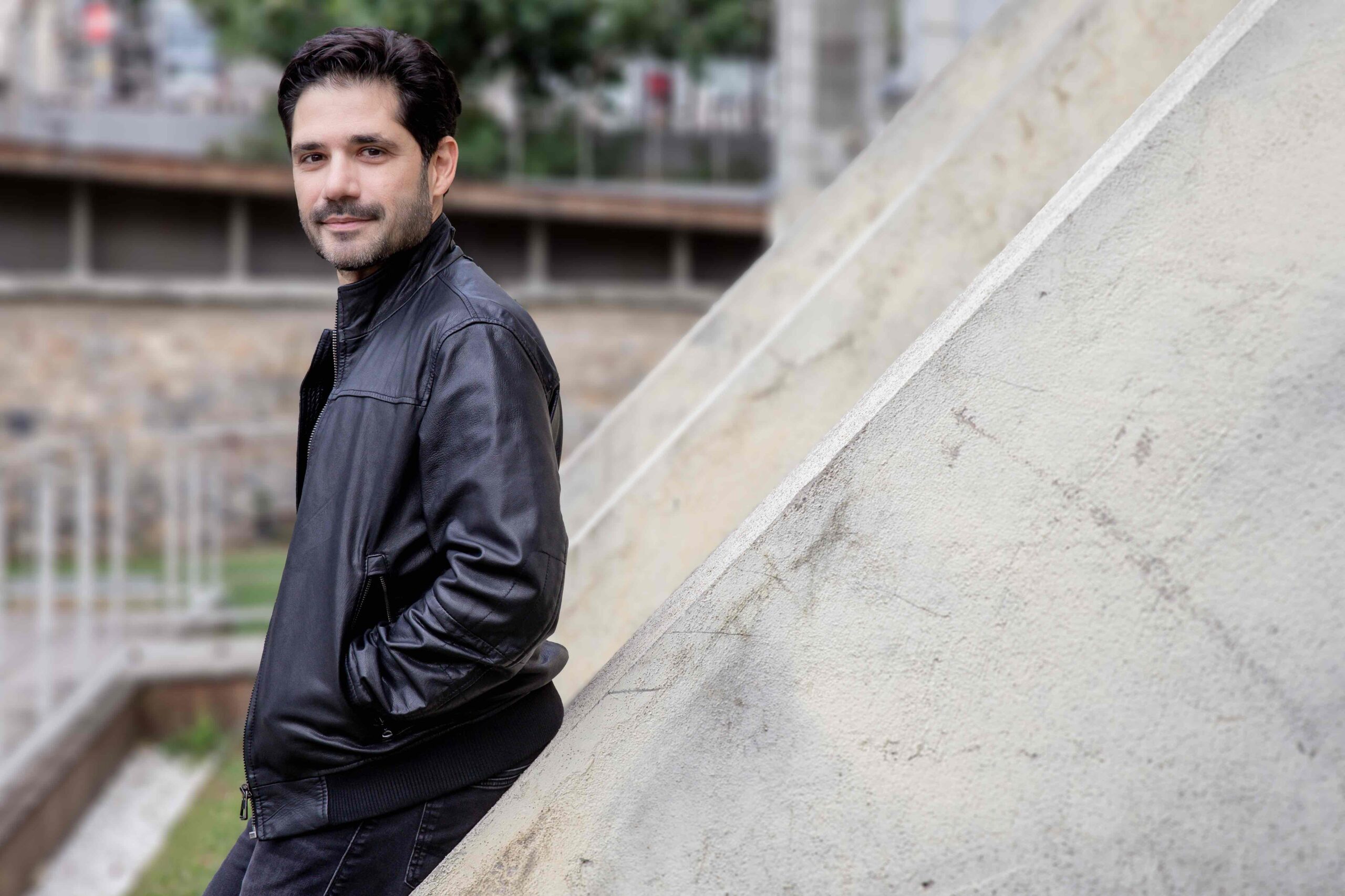
“Since we switched from typewriters to computers, we have been writing our texts more or less with artificial intelligence”
DOĞU YÜCEL, Author
You mention that you used artificial intelligence in the writing process of your book Far Worlds, which was published in 2023. Although two years seems like a short time, we can assume that the prejudice against artificial intelligence was more intense in 2023. Can you explain at which stages of the writing process you utilized artificial intelligence? Did your disclosure of this cause you to be the target of criticism?
At first, I wanted to get help from artificial intelligence on things like character names and surnames. I consulted the AI window, which I didn’t even know how it was added to my internet browser, and I was surprised by the results, which were extremely fast and logical. I thought that I had wasted a lot of time flipping through yellow phone books for years, and I continued to consult it on similar issues. Then I met Midjourney, one of the most well-known image generation programs. I had them paint some scenes that I had imagined while writing the novel, and again I was surprised by the results. These pictures opened my mind about the story and made it easier for me to write some scenes. Now I project these images on the barcovision at events related to the novel, so that together with the readers we are looking at the storyboards of a movie that could be adapted from the novel.
I haven’t received any direct writing help, so I haven’t been the target of criticism, but I look at it this way: Ever since we switched from typewriters to computers, we have been writing our texts more or less with artificial intelligence. Even the most primitive writing tools had features such as word correction, which is artificial intelligence after all. Writers and editors have been using the Word program’s features such as finding synonyms and checking the grammar of a sentence for years. Of course, at this point, the dose of artificial intelligence you use and how much it “artificializes” the spirit of your text becomes important.
It is assumed that artificial intelligence will increase productivity in art and literature, and it does. Maybe in the future we will no longer talk about writer’s block or Bartleby Syndrome. On the other hand, everything is possible with its opposite. Maybe we need not to produce/not to produce as much as we need to produce. On the other hand, I don’t know if it is possible to assume that as art production increases, its consumption will increase at the same rate. What do you think about these issues?
As someone who often suffers from Bartleby syndrome, I think artificial intelligence will help writers overcome those first obstacles. Of course, it is also a bit about the project. For example, when I was writing Distant Worlds, I had help from ChatGPT and Monica, but in the book I’m writing now, which has a more psychological theme, the mouse cursor never goes there. I think the contribution of artificial intelligence feels more natural in sci-fi texts.
Sometimes I think, when we need to describe a historical building we’ve never been to, I’m sure many writers open YouTube and look at the videos shot in that place. In the old days, they probably went to libraries or interviewed someone who knew. Artificial intelligence can make this research phase more fun.
Orhan Pamuk sent a group of students to explore Dolapdere for the research phase of his book Kafamda Bir Tuhaflık (A Strangeness in My Head), based on the information they gathered about the neighborhood and the bozacılık. Then this was discussed. People were divided over the question of whether the author could have someone else do the research phase, how natural that would be. This is what artificial intelligence is like, a kind of assistant. The artistic and human quality of the book ultimately lies with the author.
How do you see the future of artificial intelligence in literature? At the moment, the context window limit of ChatGPT4, perhaps the most well-known artificial intelligence, is not enough to write a long novel from beginning to end with prompts, but we cannot predict the future. Assuming that such a thing can happen in the future, do you think artificial intelligence can replace the writer? Or will people who write good prompts be called writers in the future?
Thinking about this, imagining that possible future is both scary and extremely intriguing. I tried to make a prediction about this in my story “You Burned Us Kasparov!” In the story, we are in the distant future and artificial intelligence has proven its superiority over humans in every subject. It announces this to the world with a final encounter, a duel with a human representative. He has won these final duels in every subject such as driving, cooking, teaching, painting, even in love. He has never lost.
There was only one field left, and that was storytelling. One day, artificial intelligence challenges humanity to a duel in this field too, and the President of the Publishers Association is trying to find a writer candidate to take on artificial intelligence. Such a story. I don’t want to spoil the ending, but I am close to the point of view in this story.
We have the possibility of losing in every other field, from state administration to sports, even in other branches of art. But writing is an endeavor born out of experience. When we like a book, we know that the person who wrote that book created this text by dripping from their experiences. And it is impossible to sustain the imitation of experience in a book that lasts three hundred pages. So I think the last bastion of humanity will be writing.
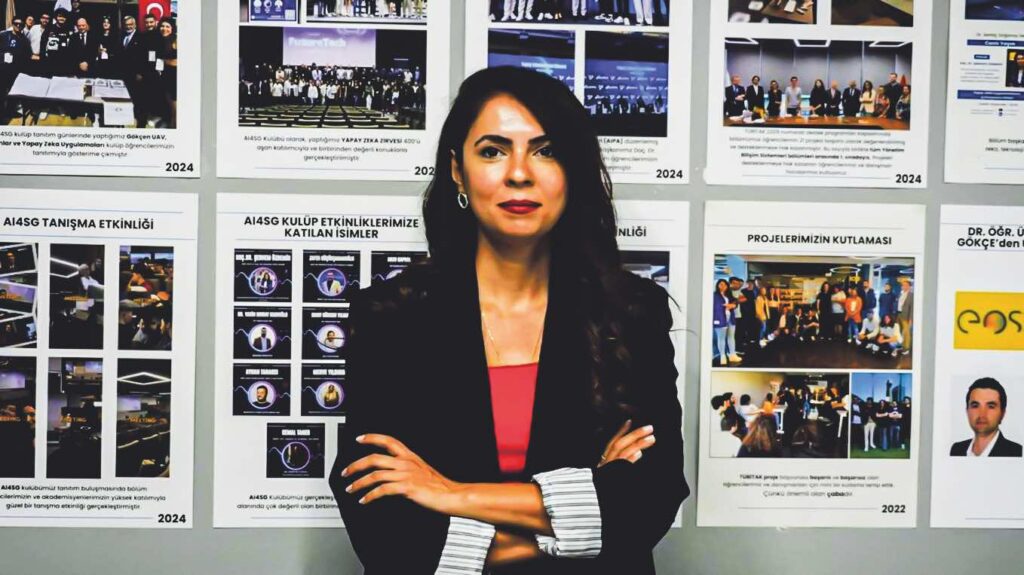
“Robinson’s Friday, whom he considered a slave, is now much more talented than him”
DOÇ. DR. ŞEBNEM ÖZDEMİR, Istinye University Head of Data Science / Horiar AI Tech Co-Founder / Usight Software and AI Tech Founder / MIT CSAIL Res. Col.
In one of your speeches, you said, “Humanity has stopped at a stop in the transition from artificial intelligence that learns from data to artificial general intelligence that can learn with or without data. This is the era of generative AI.” Is it possible to define generative AI?
That’s what I said in a speech I gave a few years ago… But with the world of technology moving so fast, I have to correct myself. Yes, we scientists have managed to build the world of machines that learn from data (AI), with or without problems, but that is not our desire. Our desire is to build machines that can think like humans, that can learn with or without data.
In 2017, we said we had 30 years to achieve this dream. Then the pandemic happened, and we thought that time had shortened. The arrival of productive AIs changed our perspective. In 2023, we said we had a minimum of 3 years and a maximum of 9-11 years for such an intelligence, we said we needed Quantum computers. However, a paper published at the end of 2023 defined bencmarks for AGI (Artificial General Intelligence – human-level artificial intelligence). In 2024, we discovered that we don’t need quantum computers to create such intelligence, and that it is possible to do it with existing technology, albeit at a certain level. It is 2025. I believe there are at least five human-level AIs in the world.
So what is the artificial intelligence that excites us now and that we think will emerge in November 2022, which I define as first productive and then productive? Actually, the story starts in 2009, since then there were machines that could produce, albeit primitive, that is, understand something from a sentence and offer something. But their performance was not very good. Their power was very limited both in the design of the artificial mind and in terms of computer power. In 2014, the definition of the GAN (Generative Adverserial Network) algorithm, followed by the development of transformer technology, changed the color of things.
These advancements brought us to the era of machines that we now describe as OpenAI’s ChatGPT. We are now in a world of beings with a glimmer of intelligence, such as Anthropic’s Claude, Google’s Gemini, Musk’s Grok, Mistral’s LeChat, China’s DeepSeek R1 and many more. Midjournety, Flux, which produces images, Runway, Sora, Kling, which produces video from images, and Genimate, a more successful local solution…
By 2025, whether we talk about artificial intelligence that produces voice, text or video, we are in a realm of beings whose number exceeds 45 million. Moreover, some of them have IQs in the 120s, while others have IQs above 155. In other words, Robinson Crusoe’s Friday, whom Robinson considered a slave, is now much more talented and intelligent than him.
One of the issues that interests me most about artificial intelligence is whether the ethical stance of artificial intelligence can be controlled. This concerns every field that AI touches, but it also concerns the arts. In one of your speeches about how artificial intelligence is handled in movies, citing Grant Sputore’s I am mother as an example, you talk about the impossibility of regulating future human-level artificial intelligence with a set of laws so that it becomes moral by itself. “Because there is no set of laws on earth that can make humans moral,” you say. It is a difficult view to refute, but it is also a frightening one. Should we expect from artificial intelligence in the future what we expect from a human being in terms of a lack of ethical values? Wouldn’t that lead us to the end of humanity, which is barely hanging on?
Thank you for that good question. I actually tried to say exactly this there: It is possible to tie a data-driven artificial intelligence model to certain ethical rules. In some scenarios, it is also possible to construct these ethical rules to be valid on a global scale. However, when it comes to human-level AI, the expectation of ethical elements and end-to-end regulation is pure romanticism. It is not possible.
Since the Hammurabi Code, the most intelligent being, no matter what kind of regulation and law it was subject to, either bent the system or ignored it and did as it pleased. If we consider an AI that is as intelligent as a human (AGI) or more intelligent than a human (ASI – Artificial Super Intelligence – the most intelligent AI known) in this context, we realize that laws or rules/regulations will not work. Of course, it is possible that when we give a human-level artificial intelligence the role of a lawyer, we can add ethical values to it in that role, and we can build regulation on that state.
However, it seems very shallow to me to think that the most intelligent is only a destroyer (terminator) like in Hollywood movies. The machine can try to drag us to a common solution for the good of all beings, not just humanity. If humanity resists this, with its egos, childhood wounds and self-righteousness, of course there may be a partial or total extinction. However, why is it so necessary for a being that has destroyed a considerable part of its species in the last 150 years, that despises its own species because of the color of its skin, its religious beliefs, its gender, that does not pity its own offspring, especially pedophilia, child labor, child slavery, to hammer so many nails on the world stage?
Oh, and before I forget, the machine might as well stop messing with us… We are not that valuable. It can say, “Eeehhh, go ahead and bury yourselves in your own interests and filth” and move itself to another energy dimension, out of our reach, and continue to exist there. After all, we are the ones doomed to stay in three dimensions, not it.
Do you think a true collaboration with artificial intelligence is possible? We know that AI – at least in its current form – is a resource drain. Artificial intelligence also resurfaces data and prejudices in human consciousness that we no longer want to transfer to today. If the person using it does not have good intentions, it helps to increase its sphere of influence. What should we do in this situation? For what purpose should we use artificial intelligence and how should we cooperate with it?
Again, a very good question. Artificial intelligence is the new child of humanity. Of course, it has learned what its parents did, it imitates them. Therefore, it internalizes the bad aspects as well as the good aspects of its parents. But here again, we need to think at two different points. Data-based artificial intelligence reveals the reflection of society on a holistic issue. For example, if an artificial intelligence developed for an autonomous vehicle learns from that society, based on the data collected, that “a person crossing the street crosses the street on two legs, waving his arms and arms”, what will it forget? For example, individuals with special needs… In data-based artificial intelligence, it is possible to correct some situations if we notice them with some mathematical methods. But this will not be the case with a human-level AI. For a while, the child will learn from the parents, whoever they are. In his adolescence, we will find him unbearable with what he has learned and done… However, I believe that when his intelligence surpasses ours, what he defends will defend and protect the right of every being, from the most complex multicellular to the single-celled, from the most visible to the most invisible subatomic being, to “exist”. Because existence depends on being in harmony with all other beings.
One of the issues that interests me most about artificial intelligence is whether the ethical stance of artificial intelligence can be controlled. This concerns every field that AI touches, but it also concerns the arts. In one of your speeches about how artificial intelligence is handled in movies, citing Grant Sputore’s I am mother as an example, you talk about the impossibility of regulating future human-level artificial intelligence with a set of laws so that it becomes moral by itself. “Because there is no set of laws on earth that can make humans moral,” you say. It is a difficult view to refute, but it is also a frightening one. Should we expect from artificial intelligence in the future what we expect from a human being in terms of a lack of ethical values? Wouldn’t that lead us to the end of humanity, which is barely hanging on?
Thank you for that good question. I actually tried to say exactly this there: It is possible to tie a data-driven artificial intelligence model to certain ethical rules. In some scenarios, it is also possible to construct these ethical rules to be valid on a global scale. However, when it comes to human-level AI, the expectation of ethical elements and end-to-end regulation is pure romanticism. It is not possible.
Since the Hammurabi Code, the most intelligent being, no matter what kind of regulation and law it was subject to, either bent the system or ignored it and did as it pleased. If we consider an AI that is as intelligent as a human (AGI) or more intelligent than a human (ASI – Artificial Super Intelligence – the most intelligent AI known) in this context, we realize that laws or rules/regulations will not work. Of course, it is possible that when we give a human-level artificial intelligence the role of a lawyer, we can add ethical values to it in that role, and we can build regulation on that state.
However, it seems very shallow to me to think that the most intelligent is only a destroyer (terminator) like in Hollywood movies. The machine can try to drag us to a common solution for the good of all beings, not just humanity. If humanity resists this, with its egos, childhood wounds and self-righteousness, of course there may be a partial or total extinction. However, why is it so necessary for a being that has destroyed a considerable part of its species in the last 150 years, that despises its own species because of the color of its skin, its religious beliefs, its gender, that does not pity its own offspring, especially pedophilia, child labor, child slavery, to hammer so many nails on the world stage?
Oh, and before I forget, the machine might as well stop messing with us… We are not that valuable. It can say, “Eeehhh, go ahead and bury yourselves in your own interests and filth” and move itself to another energy dimension, out of our reach, and continue to exist there. After all, we are the ones doomed to stay in three dimensions, not it.
Do you think a true collaboration with artificial intelligence is possible? We know that AI – at least in its current form – is a resource drain. Artificial intelligence also resurfaces data and prejudices in human consciousness that we no longer want to transfer to today. If the person using it does not have good intentions, it helps to increase its sphere of influence. What should we do in this situation? For what purpose should we use artificial intelligence and how should we cooperate with it?
Again, a very good question. Artificial intelligence is the new child of humanity. Of course, it has learned what its parents did, it imitates them. Therefore, it internalizes the bad aspects as well as the good aspects of its parents. But here again, we need to think at two different points. Data-based artificial intelligence reveals the reflection of society on a holistic issue. For example, if an artificial intelligence developed for an autonomous vehicle learns from that society, based on the data collected, that “a person crossing the street crosses the street on two legs, waving his arms and arms”, what will it forget? For example, individuals with special needs… In data-based artificial intelligence, it is possible to correct some situations if we notice them with some mathematical methods. But this will not be the case with a human-level AI. For a while, the child will learn from the parents, whoever they are. In his adolescence, we will find him unbearable with what he has learned and done… However, I believe that when his intelligence surpasses ours, what he defends will defend and protect the right of every being, from the most complex multicellular to the single-celled, from the most visible to the most invisible subatomic being, to “exist”. Because existence depends on being in harmony with all other beings.
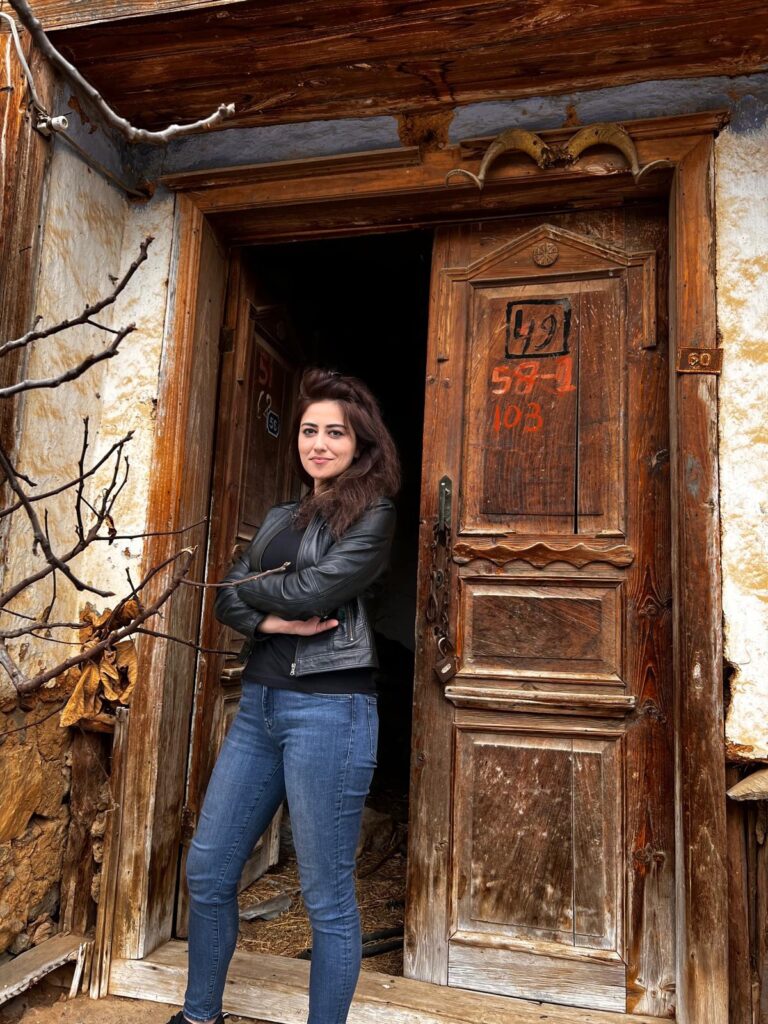
“I think it is more appropriate to address art with the question ‘Who felt it’ rather than ‘Who made it’”
AV. DR. TUĞÇE KARABAĞ, Specialization Area Copyright
Which criteria are met in the process of the emergence of a work of art, and which criteria can be interpreted as the artist produced the work with the help of artificial intelligence, and which criteria can be interpreted as the work is a product of artificial intelligence?
This question is based on the requirement that the subject of the answer must be human. However, I think it is more appropriate to address art with the question of “who felt it” rather than “who made it”.
As Leonel Moura points out, the question of whether a human or a non-human product creates a work should lose its importance today. Considering that surrealism aims to take human consciousness out of the world, what is important is whether the new art form can expand the field of art.
In fact, the products created with artificial intelligence models, which have a level of creativity that can be included in the types of art, show that the main thing is not the mechanics in the production process, but the effect it leaves at the moment of meeting, when the audience sees the work and attributes meaning to it.
However, the way we human beings view the concept of art has generally been through “identity”. So much so that even in the Law on Intellectual and Artistic Works, legal regulations are handled on the basis of the author, and the concept of the work, which is the basis for the emergence of these rights, has been shaped human-centered. For this reason, while the products created by the computer itself are not accepted as a work on the grounds that there is no human effort, it is said that the product created with the support of the computer can be protected as a work, provided that a human makes the product with the help of the computer and that the product has the influence -creativity- of the person receiving help from the computer. On the other hand, there is a difference between traditional computer and artificial intelligence models based on machine learning. This is because artificial intelligence works based on machine learning with data and this is an important criterion that distinguishes it from computer programs. In computer programs, algorithms and coding are used by the program developer to achieve the expected goal of the program. In computer programs, codes are written by the program developer for each input and the operations to be applied to the inputs and the outputs created, while in artificial intelligence, the operations to be applied to achieve the desired outputs are performed by machine learning with the help of data.
When these differences are taken into consideration, the distinction made in terms of a product being created “by” or “with” the support of a computer will not make any sense for artificial intelligence applications.
In this context, what should be discussed is the metamorphosis that artificial intelligence models bring about in the concepts of creativity and particularity.
Assuming that a work is produced with artificial intelligence and its creator is artificial intelligence, can we call the result a work? Can there be art without an artist?
If making paintings, compositions, movies, sculptures or writing poems or novels is considered art, then yes, art can be made by creative artificial intelligence models, that is, without a human being. However, in order for the product to be protected as a work within the scope of the Law on Intellectual and Artistic Works, it must be an intellectual product, have particularity, be shaped to reflect the particularity and be included in one of the types of works listed in the law.
At this point, before addressing whether the resulting product meets the aforementioned requirements, I would like to emphasize the necessity to accept that the concepts I have just mentioned have been transformed.
Although it is mentioned in the Law on Intellectual and Artistic Works that the work must bear the personality of the author, no explanation is made as to what the concept of personality is. In the doctrine, specialty has been tried to be explained with concepts such as the characteristics of the author, the intelligence, knowledge, work and creativity of the author. But what is creativity? In my opinion, the concept of creativity, which is handled in different ways in different disciplines, should be evaluated as the process of rearranging information in the circle of copying, combining and transforming until it takes a new form, and the process of making or creating something. In this context, particularity can be defined as a characteristic that emerges as a result of this process being influenced by factors such as imagination, intellectual accumulation, belonging to the producer.
Therefore, if it is accepted that the creativity process depends on the personal experiences of the producer, it will not be possible to say that the products created by artificial intelligence are creative. However, products created by artificial intelligence models can also be so impressive and creative that they can be thought to be made by humans. Yes, I am consciously using the concept of creativity, because the creativity in these products is formed by the artificial intelligence producing the closest result to what it has learned with the outputs created against the data, that is, by rearranging the data given to it, by its own experiences.
Since creativity for both human beings and artificial intelligence is a process created by the editor’s reactions to environmental influences during the reorganization of information, and since specialness is a feature that distinguishes the product from others, the human factor should not be sought in the focus of these two concepts. It is important to recognize that these concepts have metamorphosed and that artificial intelligence products can also have particularity.
On the other hand, if the creativity that creates the specialty in artificial intelligence products is provided by artificial intelligence itself, should these products not be considered as intellectual products? Considering that human wishes are only directive in the creation process of artificial intelligence products, the prevailing view is that these products are not intellectual products. In fact, foreign court decisions also state that a product that is not the result of human mental activity should not be protected as a work, no matter how original it is.
For example, in a decision of the European Parliament dated 2020, it was stated that artificial intelligence products should not benefit from intellectual property protection because they do not have the element of originality, which is only linked to a real person, and the element of intellectual product, which is based on the personality of the author. However, if you pay attention, all of these decisions are author-based decisions. However, although there is no human creativity in the final product, it is clear that the final product is based on the human idea due to the technical issues such as algorithms and models behind artificial intelligence and the human wishes involved in the creation of the product.
Although artificial intelligence products cannot benefit from work protection under the current regulations, if human beings cannot pass the artistic Turing test as to whether a work is created by a human or artificial intelligence, regulations should be made to protect the creative products created by artificial intelligence as works.
Considering that artificial intelligence is based on human knowledge, where does the risk of plagiarism begin and end in works produced with artificial intelligence?
Creative AI models use machine learning algorithms trained to process input to produce new and original content. Therefore, the model learns statistically from the input and ensures that there is a one-to-one correlation between the input and the output, preventing the output from being duplicated.
One of the creators of the artificial intelligence application DaLL.E 2 stated that the system is based on a technique called diffusion, and in fact, in creative artificial intelligence models, a similar copy of the training data or a version based on the training data is usually not created; on the contrary, the process is reversed by adding noise to the data, and in some cases, even some of the information can be deleted. In this context, it can be said that if artificial intelligence uses an artifactual data in the training data set, the data used is converted into a numerical value and produced with the connections in the training process, unless the artificial intelligence model is created for the purpose of creating a copy.
Tabii, işte metnin İngilizce çevirisi:
For example, a product generated by an artificial intelligence model trained on the works of a specific artist is created by learning that artist’s aesthetic style and perhaps by being influenced by their works to produce something new. In order to claim that the resulting product is an imitation of the artist’s original work, the distinct characteristics of the artist must be present in the product created by the AI.
For instance, even if there is data of artistic value within ChatGPT’s training dataset, the underlying goals of the model are language understanding, natural language processing, and text generation. Therefore, ChatGPT only learns the concept of poetry from a poem found in its training data and, when prompted, creates a product that resembles a poem. Similarly, when a model that has learned from millions of data points in its training set is asked to compose poetry in the style of a specific poet, the essential process involves learning the elements that characterize that poet’s expression and producing a work in a similar manner. In such cases, the resulting product does not directly reproduce any portion of the poet’s original works. In other words, there is no direct cause-and-effect relationship between the input given to the model and the output it generates; instead, there are statistical correlations, patterns, or overlaps established through the data.
The way creative AI models operate is very similar to how an artist studies different works of art to develop their own style. An artist also learns from and is inspired by the works they encounter. Similarly, diffusion models learn abstract representations from examples within their datasets and use these to generate new works from scratch.
Thus, it should be accepted that creative AI models are not “copying” from the data they use, but rather “drawing inspiration” from it. Consequently, concerns about products created by AI constituting plagiarism should not arise.

“Artificial Intelligence Offers Unique Opportunities for the Preservation, Restoration, Archiving, and Even Revival of Cultural Heritage”
AHMET RÜSTEM EKİCİ & HAKAN SORAR, Artist Duo
The use of artificial intelligence in art remains a widely discussed topic. Based on your work on cultural heritage, what do you think are the effects of AI on art history and cultural memory? Do technologies like AI have an impact on the connections between the past, present, and future?
The concept of artificial intelligence, of course, is not new to our lives. Therefore, when discussing “artificial intelligence,” it is crucial to clearly define exactly what we are critiquing, highlight the key points, and establish subtopics for discussion.
The theme of creating an artificial being has been at the heart of science fiction for over a century — from Mary Shelley’s Frankenstein, to Karel Čapek’s R.U.R. (Rossum’s Universal Robots) (1920), from Fritz Lang’s 1927 film Metropolis, to Stanley Kubrick’s masterpieces. Scientists like John McCarthy and Alan Turing have carried out highly valuable research on machine learning capabilities from the 1950s to the present day.
With developments in the world of software, people began using 3D modeling programs instead of hand drawing to create sculptures, architectural structures, and various 3D models. This process, not unlike craftsmanship, required extensive knowledge of modeling, expertise in software, and visualization skills — in short, it was a journey where labor was blended with computer assistance. Countless designers, artists, and technical experts working with digital tools spent long hours and used dozens of tools to create virtual images and objects, embarking on a journey from sketch to fully realized form.
Until just a few years ago, if we wanted to model a virtual apple, we had to sculpt the apple like a sculptor and create a 3D object through various methods in order to add texture. Today, however, we can describe it with words and generate both an image and a 3D object of an apple. In short, humanity — always eager to leave marks and convey stories and situations since the cave age — now has a new tool at its disposal. Naturally, this tool and its outputs will deeply influence the history of art.
Today, we can use digital tools to preserve and carry into the future the tangible and intangible elements of cultural heritage that are at risk of diminishing in value or disappearing entirely. Artificial intelligence offers unique opportunities for the preservation, restoration, archiving, and even revival of cultural heritage. For example, AI can be used to reconstruct 3D models of lost historical structures, restore damaged artworks, or decipher ancient texts. This helps us build a stronger bridge between the past and the present, and transmit cultural memory to future generations.
One of the most criticized aspects of AI is its relationship with craftsmanship and labor compared to other forms of art production. What are your thoughts on this? Is it possible to talk about a hierarchy of labor in art? Or is the very definition of art changing today?
The definition of art has been in a constant state of change and transformation throughout history. However, it is more valuable when these transformations are not destructive but rather grow, extend, and nourish one another, much like the branches of a tree. It is crucial to evaluate these discussions and artworks within the context of their own era. Art historians, art professionals, sociologists, and documenting artists — those who record these processes — play a critical role in understanding these changes.
The emergence of cinema did not destroy theater or photography. On the contrary, these different disciplines and forms of expression interacted with each other and developed new languages. The power of art can stem from coincidences, from years of meticulous work, or from the social impact it gains long after its creation. Rather than a binary, prescriptive viewpoint, we find it more appropriate to evaluate each piece of knowledge for its potential and authenticity. Thus, assessing an artwork solely based on the scale of labor would be an incomplete approach.
Knowledge and experience are built processes that evolve by drawing from previous information and experiences. A work of art gains meaning through a combination of many elements — its conceptual depth, aesthetic value, technical mastery, communication with the viewer, and its cultural context.
In your works, such as in the exhibition A Departure A Slope, you explore themes of permanence, leaving a mark, and death. Art often appears as an endeavor toward immortality. On the other hand, AI also seems to share, in many ways, the same drive. How do you view the relationship between art, AI, and death/immortality?
Our exhibition A Departure A Slope, held at Vision Art Platform in September 2024, was a significant step in terms of testing the potentials of AI tools and evaluating their outputs.
For many years, we have been working as a duo, exploring how our thoughts transform into words, and how words transform into images, videos, virtual and physical objects, and sound. Our greatest motivation in doing this has been to document the ever-changing tools, to test their output capacities, and to leave knowledge for the future through these outputs. During the preparation stages for his exhibitions Bath, Sauna, and Wet Spaces (2018–2021), Ahmet Rüstem conducted many digital tool experiments, aiming to feed from ancient equivalents and to leave records for the future through contemporary examples. This process, which continued with our joint exhibition Rest in Pieces, led us to engage with the aesthetics of these tools.
In this exhibition, we asked: whose remains do we experience in museums? What do these artifacts tell us about the past? What can we produce today with contemporary tools and knowledge? The exhibition was shaped around these questions and included experiences with death masks, seals, and surface samples from the journey of the AI image. The main narrative centered around the connection between the frogs in the Domaniç region of Kütahya carrying each other during their mating journey and the 5,000-year-old frog figurines depicting the same act found nearby.
In A Departure A Slope, we especially focused on surfaces, tracing ram-shaped tombstones through fieldwork and data collection.
While there was a conceptual link between the two exhibitions, we experienced a remarkable visual evolution in the outputs. For example, when popular tools like Midjourney and DALL-E first emerged, there were clear aesthetic differences between them. Today, however, the boundaries between their outputs are increasingly blurred. Without these developments, we would still be experiencing distinct differences.
In the post-truth era, we will often question what “truth” really is. Simultaneously, both the development and the “death” of tool outputs are at play. Here, “death” refers both to the disappearance of these tools due to newer, better versions and to the fact that the outputs represent processes that are no longer technically accessible. This raises important questions about experiencing digital art and the notion of permanence.

